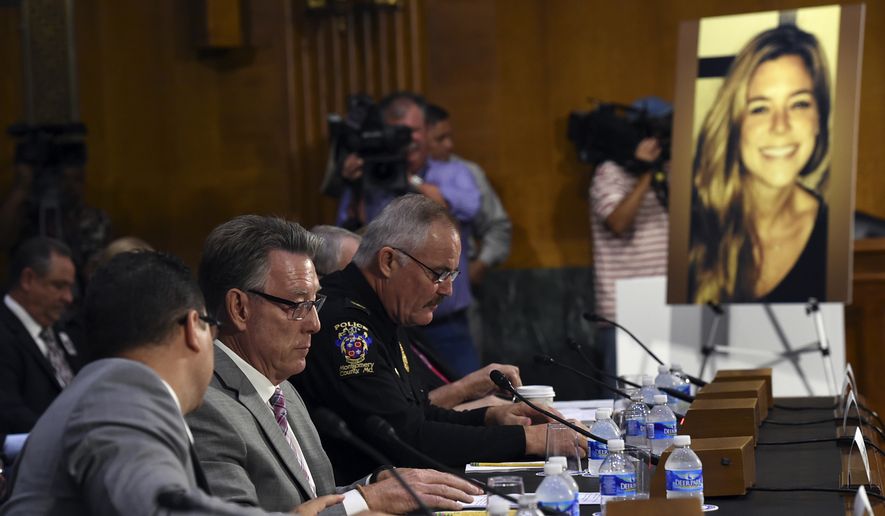The Obama administration has made significant headway in cutting down the number of sanctuary cities, but 279 municipalities are still holding out, refusing to cooperate with federal authorities on at least some cases involving illegal immigrants, Homeland Security officials said as they detailed year-end enforcement numbers last week.
Those sanctuary communities released more than 2,000 illegal immigrants back onto the streets rather than turn them over to federal authorities in fiscal year 2016, and were on pace for even more in the first two months of fiscal year 2017, which began Oct. 1.
The numbers were part of Homeland Security’s year-end immigration enforcement update, which said border agents and officers are reporting more illegal immigrants attempting to cross into the U.S., in what has been dubbed a new surge of migration.
Yet fewer are being caught in the interior by ICE, as President Obama continued to make good on his vow to stop deporting all but the most serious of illegal immigrants.
Last year, ICE caught 114,000 illegal immigrants, the lowest number in Mr. Obama’s tenure. That represented only 1 percent of the estimated 11 million illegal immigrants believed to be at large in the U.S.
More than 90 percent of those ICE apprehended had criminal convictions, had gang ties, were deemed national security risks, were new illegal arrivals or were defying active orders of deportation.
Security analysts say that makes the number of people released by uncooperative sanctuary cities even more troubling. The Obama administration wouldn’t be asking for them unless they were priorities for deportation, either as convicted criminals, national security risks or people who are ignoring recent orders of deportation.
Led by Philadelphia and Cook County in Illinois, which refuse all cooperation with the federal government, sanctuaries are likely to be one of the thorniest issues confronting Donald Trump as president. He has vowed penalties for defying immigration laws.
Mr. Trump’s selection to be attorney general, Sen. Jeff Sessions of Alabama, has also expressed support for blocking some federal funds from sanctuary cities — and even suggested bringing criminal charges against them.
The Obama administration has also called for sanctuary cities and localities to cooperate, saying communities that refuse to turn over illegal immigrants wanted by federal agents are making the streets less safe and causing more hassle for immigration agents.
“Declined detainers result in convicted criminals being released back into U.S. communities with the potential to re-offend,” U.S. Immigration and Customs Enforcement said in its 2016 review released Friday.
“Detainer” is the term ICE uses when it asks a local police or sheriff’s department to hold an illegal immigrant for pickup by federal agents. A declined detainer means the locals refused, and instead released the person onto the streets.
Fewer sanctuaries
ICE has been making some progress. In fiscal year 2015, there were 395 jurisdictions that acted as sanctuaries, refusing to turn over a total of 8,546 illegal immigrants that were being sought by ICE agents. In 2016, the number of jurisdictions dropped to 279, and the total number of illegal immigrants shielded was down by more than three-quarters to 2,008. It’s not a straight 1-to-1 comparison, however, because ICE likely stopped asking in 2016 for detainers on some illegal immigrants in communities that have gained reputations for refusing to cooperate.
Of the 25 largest jurisdictions that offered sanctuary a few years ago, 21 of them have started to work with ICE in some capacity since Homeland Security Secretary Jeh Johnson made a major push to establish better cooperation. Still, even those 21 municipalities don’t fully cooperate, officials acknowledged.
Some, such as Philadelphia and Cook County, home of Chicago, balk at most requests.
Asked over the summer, Philadelphia officials insisted that they attempt to cooperate on “violent criminals or suspected terrorists,” but they didn’t answer specific Justice Department allegations that the city refused cooperation. Cook County, meanwhile, didn’t respond to repeated requests for comment.
On broader measures of overall immigration enforcement, the numbers show continued struggles both at the border and inside the U.S.
Just five years ago, ICE agents apprehended 338,000 people in the interior of the U.S. — nearly three times the 114,000 captured in 2016.
“That’s where we’ve really seen changes,” said one Homeland Security official who briefed reporters on the numbers Friday afternoon on the condition that he not be named publicly.
Stung by criticism from immigrant rights advocates who dub Mr. Obama the “deporter in chief,” the administration has made a concerted effort to start kicking out fewer migrants from inside the U.S. The president and Mr. Johnson laid out a series of priorities and ordered agents to drop other cases.
Those priorities include serious felons and national security risks, those with multiple misdemeanors, recent border crossers and those who have been ordered deported since 2014, but who are refusing to go.
Of those ICE kicked out in 2016, nearly 84 percent were serious felons, national security risks or gang members, or were caught at the border. Another 13 percent had repeat misdemeanors or were caught in the interior after sneaking in after 2013.
Even as interior agents catch fewer immigrants, Border Patrol agents and U.S. Customs and Border Protection officers who man the ports of entry are reporting a spike in migrants attempting to enter illegally.
Homeland Security officials say the number caught at the border is an indicator of the number getting through it, so it signals an overall increase in the flow.
Border Patrol agents caught 415,816 people trying to enter illegally over the last fiscal year, which was up 23 percent from 2015. Still, it was far fewer than the 1.5 million regularly caught each year in the late 1990s.
CBP officers, meanwhile, encountered nearly 275,000 other migrants who showed up at the ports of entry but didn’t have permission to be in the U.S.
• Stephen Dinan can be reached at sdinan@washingtontimes.com.




Please read our comment policy before commenting.